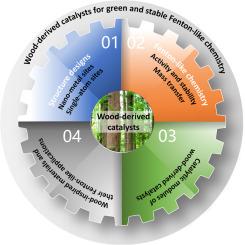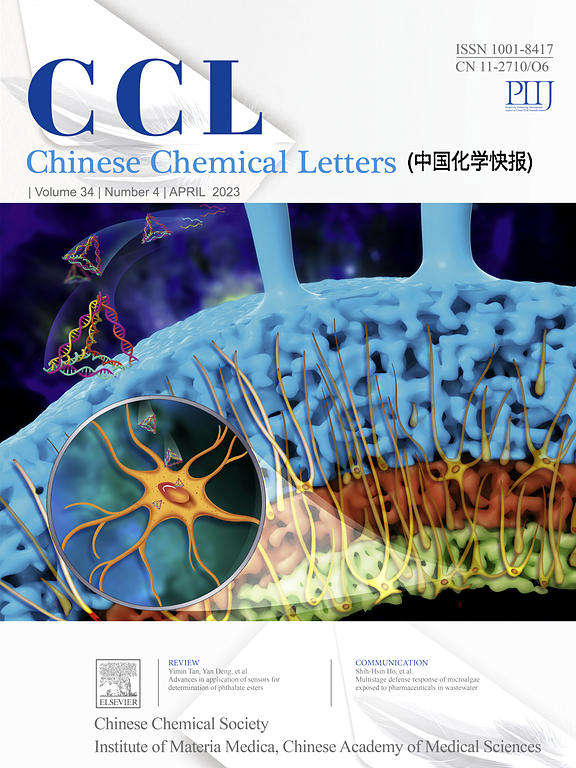Wood-derived catalysts for green and stable Fenton-like chemistry: From basic mechanisms to catalytic modules and future inspiration
IF 8.9
1区 化学
Q1 CHEMISTRY, MULTIDISCIPLINARY
引用次数: 0
Abstract
Most carbon-based catalysts utilized in Fenton-like systems face challenges such as structural instability, susceptibility to deactivation, and a tendency to disperse during operation. Wood-derived catalysts have garnered considerable attention due to their well-defined structures, extensive pipeline networks, superior mechanical strength, and adaptability for device customization. However, there remains a paucity of research that systematically summarizes Fenton-like systems based on wood-derived catalysts. In this review, we first summarize the structural designs of wood-derived catalysts based on nano-metal sites and single-atom sites, while also outlining their advantages and limitations applied in Fenton-like systems. Furthermore, we evaluate catalytic modules of wood-derived catalysts for scale-up and continuous Fenton-like systems. Additionally, wood-inspired catalytic materials utilizing commercial textures and their applications in Fenton-like processes are also discussed. This paper aims to comprehensively explore the fundamental mechanisms (e.g., characteristics of catalytic sites, catalytic performance, and mechanisms) of wood-based catalysts in Fenton-like chemistry, as well as their equipment designs and application scenarios, as well as providing the insights into future developments.

绿色稳定芬顿类化学的木质催化剂:从基本机制到催化模块和未来灵感
大多数用于类芬顿体系的碳基催化剂都面临着结构不稳定、易失活以及在运行过程中容易分散等挑战。木材衍生催化剂由于其明确的结构、广泛的管道网络、优越的机械强度和对设备定制的适应性而引起了相当大的关注。然而,系统总结基于木材衍生催化剂的类芬顿体系的研究仍然缺乏。在这篇综述中,我们首先总结了基于纳米金属位点和单原子位点的木材衍生催化剂的结构设计,同时也概述了它们在类芬顿体系中应用的优点和局限性。此外,我们评估了木材衍生催化剂在放大和连续芬顿系统中的催化模块。此外,还讨论了利用商业纹理的木质催化材料及其在类芬顿工艺中的应用。本文旨在全面探讨类芬顿化学中木质催化剂的基本机理(如催化位点特征、催化性能、机理等)、设备设计和应用场景,并对未来的发展提供见解。
本文章由计算机程序翻译,如有差异,请以英文原文为准。
求助全文
约1分钟内获得全文
求助全文
来源期刊

Chinese Chemical Letters
化学-化学综合
CiteScore
14.10
自引率
15.40%
发文量
8969
审稿时长
1.6 months
期刊介绍:
Chinese Chemical Letters (CCL) (ISSN 1001-8417) was founded in July 1990. The journal publishes preliminary accounts in the whole field of chemistry, including inorganic chemistry, organic chemistry, analytical chemistry, physical chemistry, polymer chemistry, applied chemistry, etc.Chinese Chemical Letters does not accept articles previously published or scheduled to be published. To verify originality, your article may be checked by the originality detection service CrossCheck.
 求助内容:
求助内容: 应助结果提醒方式:
应助结果提醒方式:


